The two main types of mites are commonly referred to as the poultry red mite (Dermanyssus Gallinae) and the northern fowl mite (Ornithonyssus sylviarum). However, it is the poultry red mite (Dermanyssus Gallinae) in particular that has been identified as the most detrimental to laying hens.
Dermanyssus Gallinae is found globally, except in North America, where Ornithonyssus sylviarum is predominantly distributed, just like in south America and some parts of Asia.
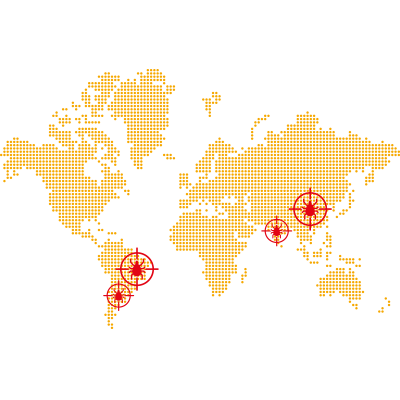
Numerous reports indicate the presence of both mite species in several countries, including Brazil, Argentina, India, and China.
This behavior makes treating red mites more challenging and complex compared to other mite species like the northern fowl mite (Ornithonyssus sylviarum). Unlike the red mite, the northern fowl mite completes its entire life cycle on the host, specifically in the feathers and down surrounding the cloaca area and is able to survive for short period of time off the host.
Therefore, treatment should be directly applied to the birds.
Birds can undergo various methods of treatment, such as spraying, dusting, or dipping, depending on the size of the flock and housing system.
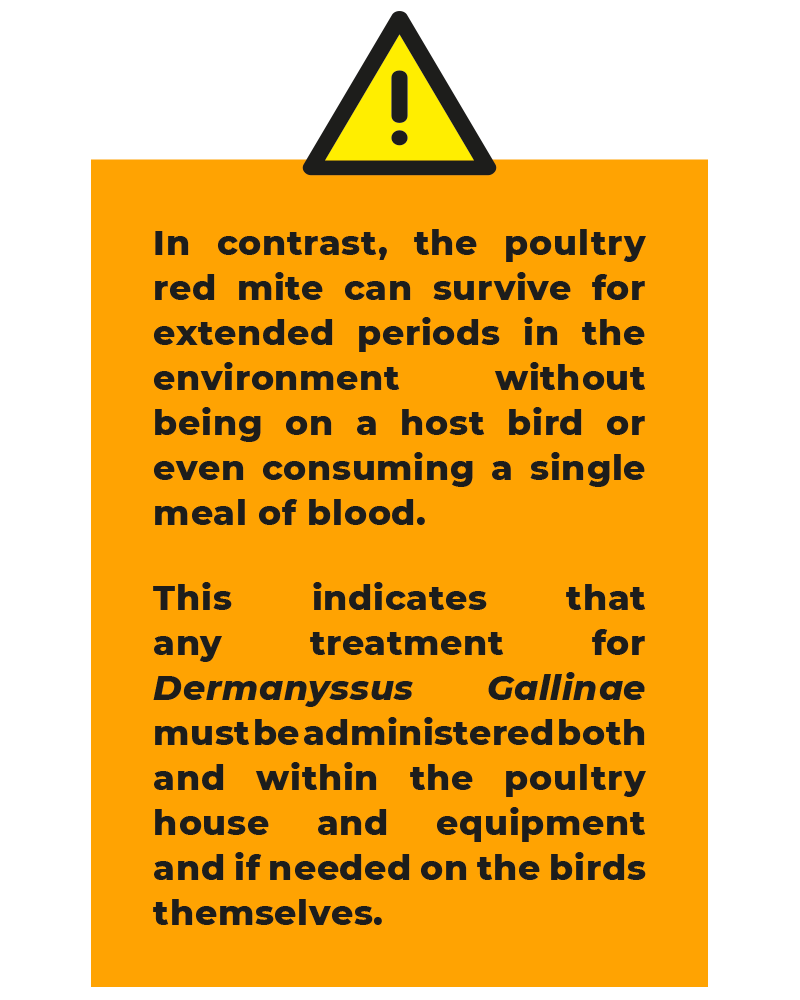
Consequently, even after removing the birds, the infestation will persist in the poultry house for a significant duration if proper treatment is not applied. Moreover, the extended period of egg production provides ample opportunity for red mites to multiply and cause extensive infestation in poultry farms.
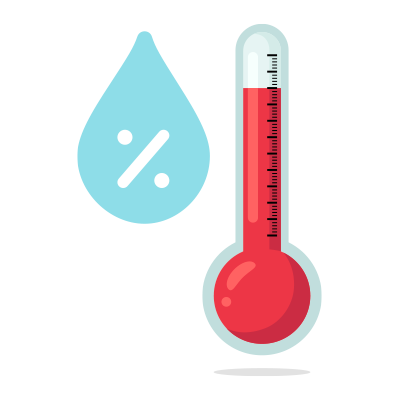
Under optimal conditions (ambient temperatures ranging from 25 to 30 ˚C and a relative humidity of 60 to 70%), the life cycle of a red mite, from egg to adult, can be completed within a span of just 7 days.
Farmers in Europe, the Middle East, and Asia are particularly affected by the negative impact of these mites. Not only do they experience losses in production, but they also face health and financial damages due to the infestation. Unfortunately, the severity of this problem is often underestimated.
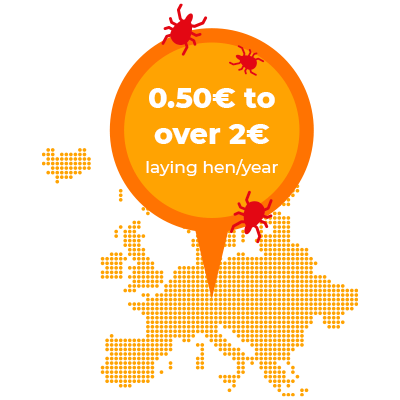
In Europe, the estimated losses caused by red mite infestation range from 0.50€ to over 2€ per laying hen per year, depending on factors such as infestation intensity, housing system, and control methods.
The mite infestation leads to several significant consequences, including:
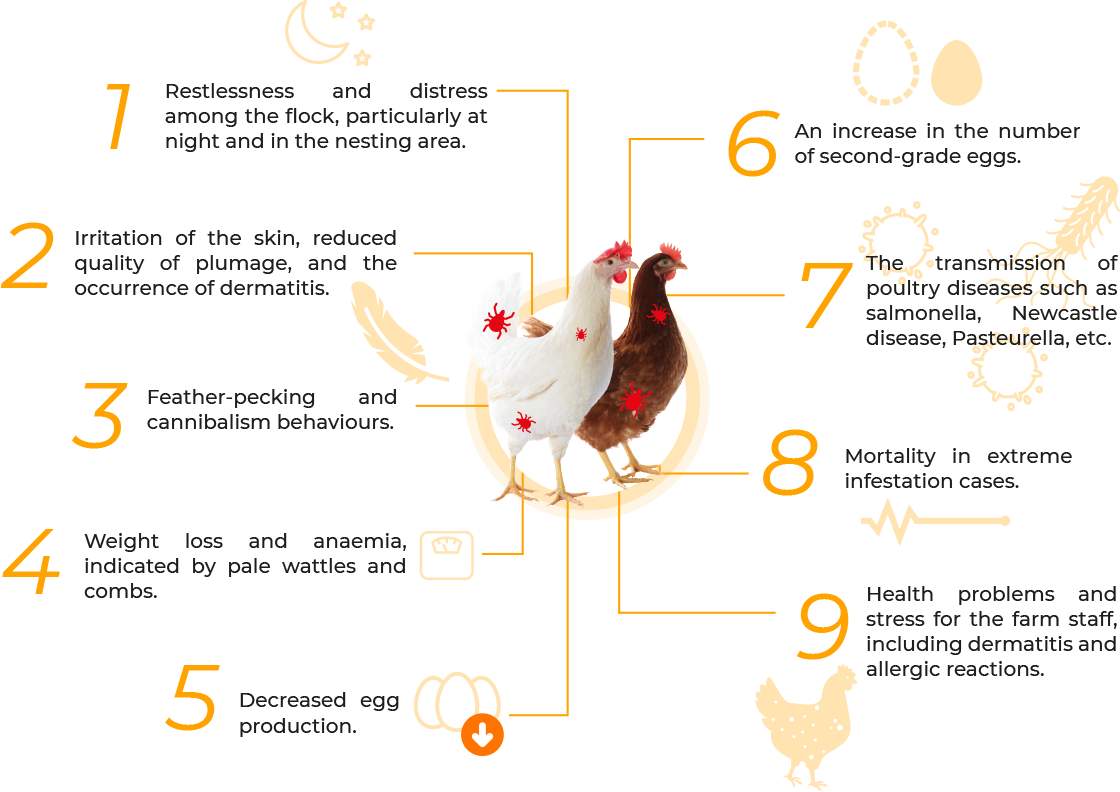
Main differences between Northern Fowl Mite (Ornithonyssus sylviarum) and Poultry Red Mite (Dermanyssus Gallinae)
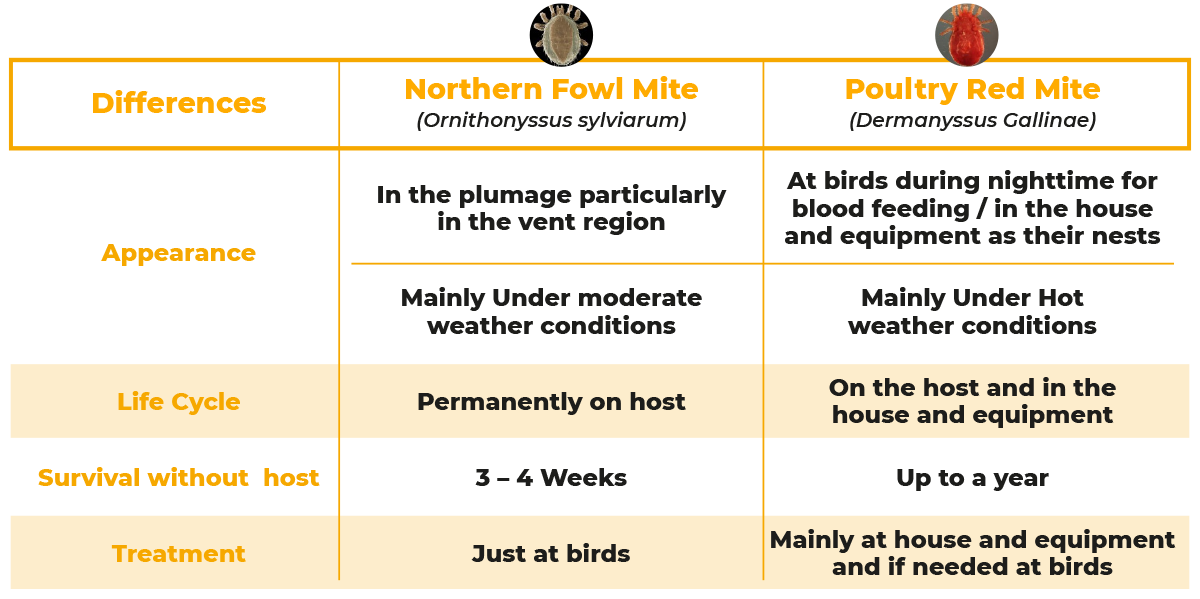
Treatments against poultry red mite (Dermanyssus Gallinae)
Treatments for combating poultry red mite can be categorized into two groups: conventional chemicals and alternative solutions.

The most commonly used chemicals to combat mite infestations are synthetic acaricides, such as Organo Phosphates, Carbomates, and Pyrethroids.

However, it is important to note that the effectiveness of these chemicals and their application success are becoming increasingly questionable due to several issues.
One major concern is the development of resistance by red mite populations against acaricides, which has been an ongoing problem for several years now.
This resistance development can render the treatments almost ineffective. The use of higher dosages also poses a risk to the health of both birds and consumers, as it can lead to the presence of residues in eggs and meat.

Moreover, the constant changes in legislation within respective countries and the limited number of products licensed specifically for red mite control make the situation even more challenging for farmers in their quest to manage this pest.
In the past few years, there has been a notable advancement in the effectiveness of products containing chemical compounds like “Isoxazoline” in combating poultry red mite. However, one drawback is the high cost and the need for repeated treatments.
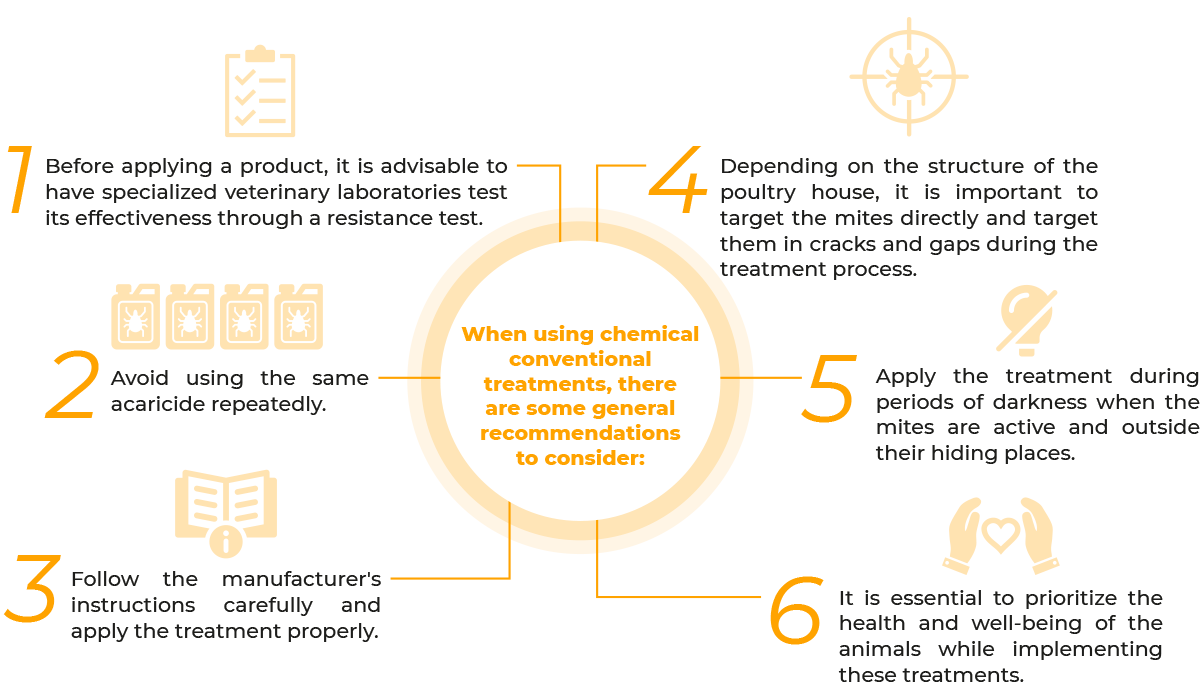

To address the aforementioned issues and overcome the challenges associated with traditional chemicals and acaricides for combating poultry red mites, innovative alternative solutions have emerged in recent times.
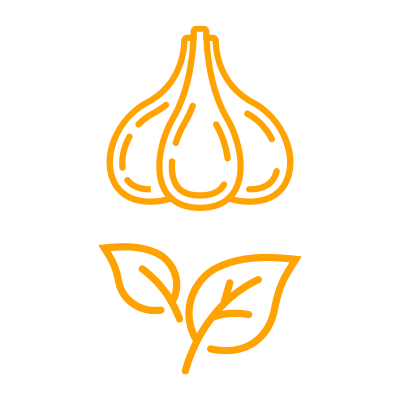
For instance, It is widely recognized that some “essential oils” obtained from plants like garlic, neem tree, thyme, and tea possess toxic properties against red mites.
Building upon this knowledge, a variety of products in the form of drinking and feeding additives have been introduced into the market.

Nevertheless, it is crucial to acknowledge that there could be possible side effects, and further research and practical knowledge are required to refine such approaches.
A widely used and effective method for combating poultry red mite in Europe is the application of “Diatomaceous earth and silica-based products”. This physical treatment involves blocking the joints between the mite’s chitin shell, ultimately immobilizing them.
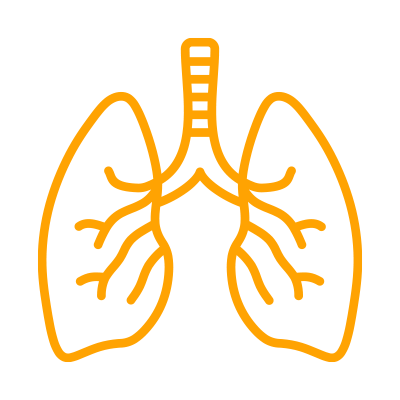
Additionally, when silicate dust enters the respiratory system of the mites, it leads to suffocation.
However, it is crucial to select the appropriate product, mixture, particle size, pressure, and application method for a successful treatment.
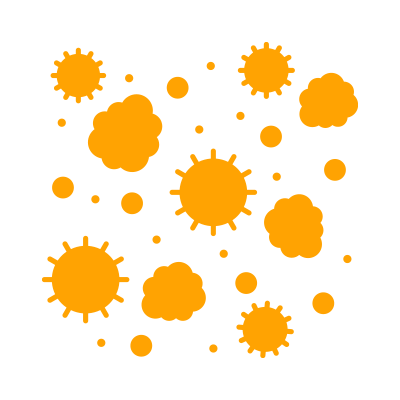
This method does not present a danger of intoxication for birds or humans. Nevertheless, the dust particles can lead to stress and health problems for both birds and staff.

In recent times, “Heat treatments” have gained popularity in European countries due to the understanding that temperatures exceeding 45 °C are fatal for poultry red mites at any stage of their life cycle, from eggs to adults.
The process involves raising the temperature inside the empty poultry house between consecutive laying cycles to above 45 °C and maintaining the temperature for an extended duration for example several days.

It is crucial to consider the melting point of plastic equipment components and to conduct these treatments under the guidance of experts, exercising utmost caution.
General Recommendations
In order to effectively control the infestation of red mites, there are several simple and essential strategies that can be implemented alongside biosecurity measures and hygiene management practices.
By implementing these general recommendations, you can significantly reduce the impact of red mite infestations on your farm and maintain a healthy environment for your birds.
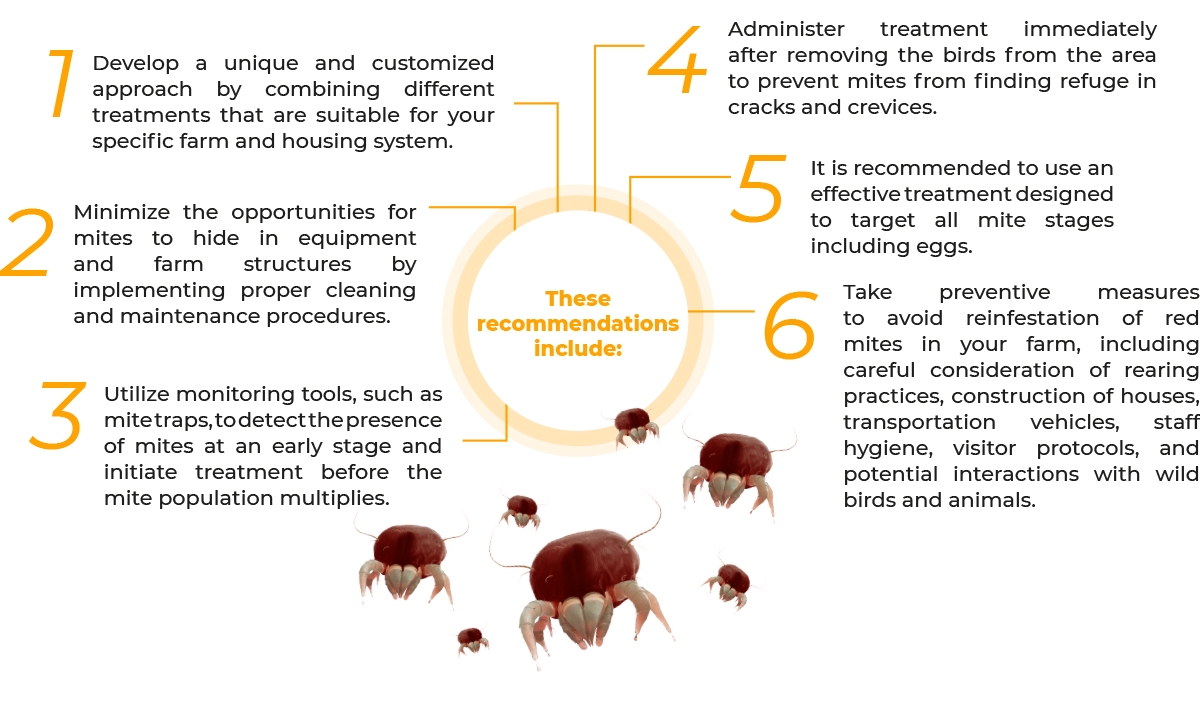
Conclusion
The rapid reproduction of mites and their increased spread across different regions as a result of climate change, along with the challenges in finding efficient methods to control them and their role as carriers of diseases, highlight the significance of mites as a serious threat in the poultry sector.
Unfortunately, the current treatment methods which are available are not effective enough to keep red mite infestation under control in many poultry farms worldwide.
Hence, additional research and advancements in treatments for fowl mite are necessary to further combat this issue.
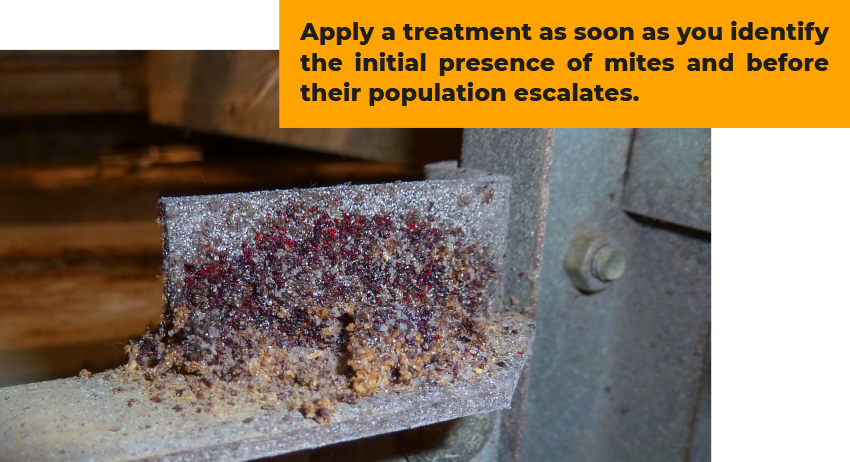
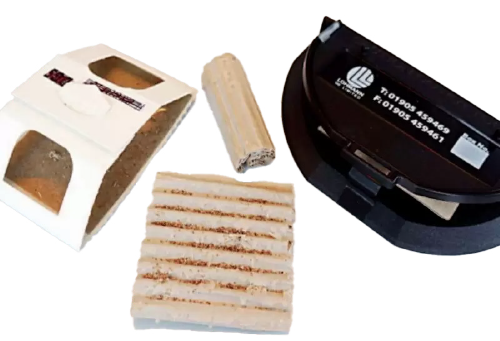
To effectively monitor the severity of infestations on your farm, employ tools such as adhesive mite traps or cardboards.




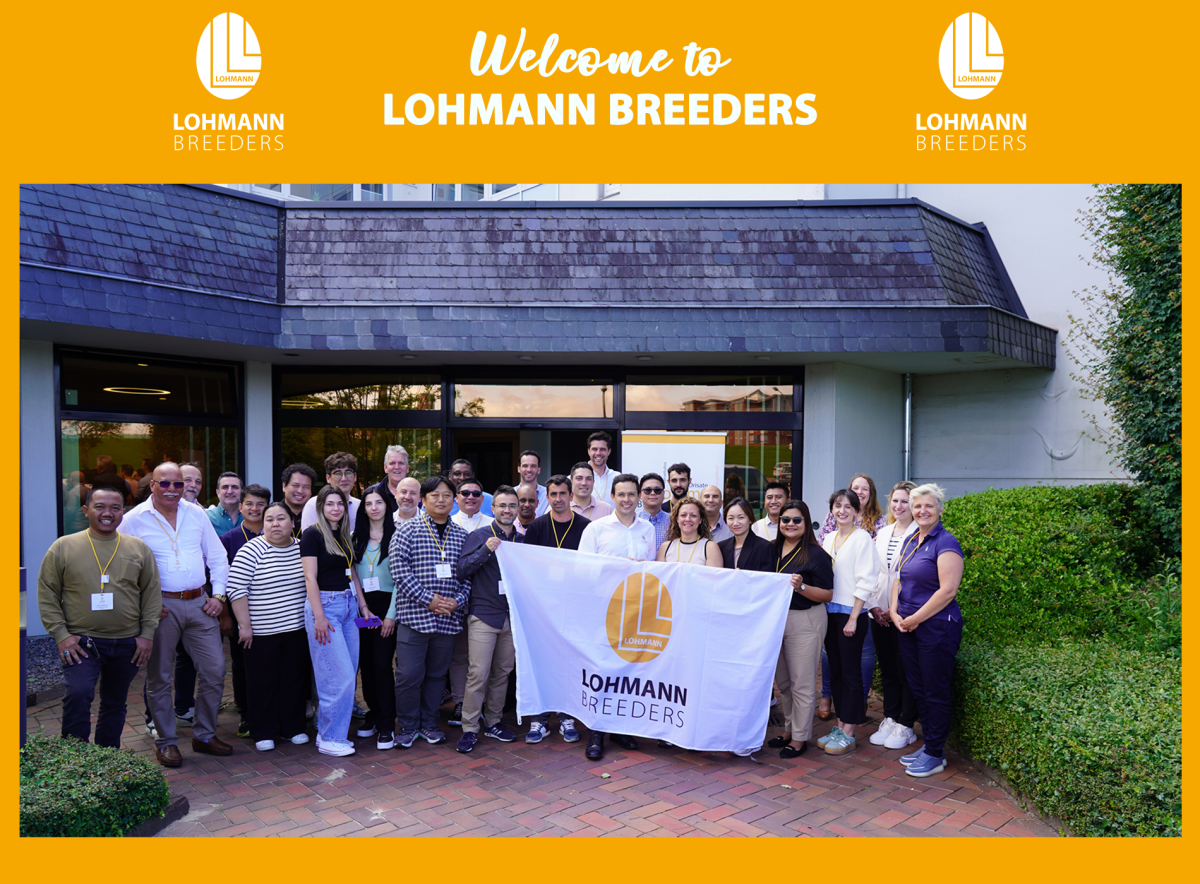
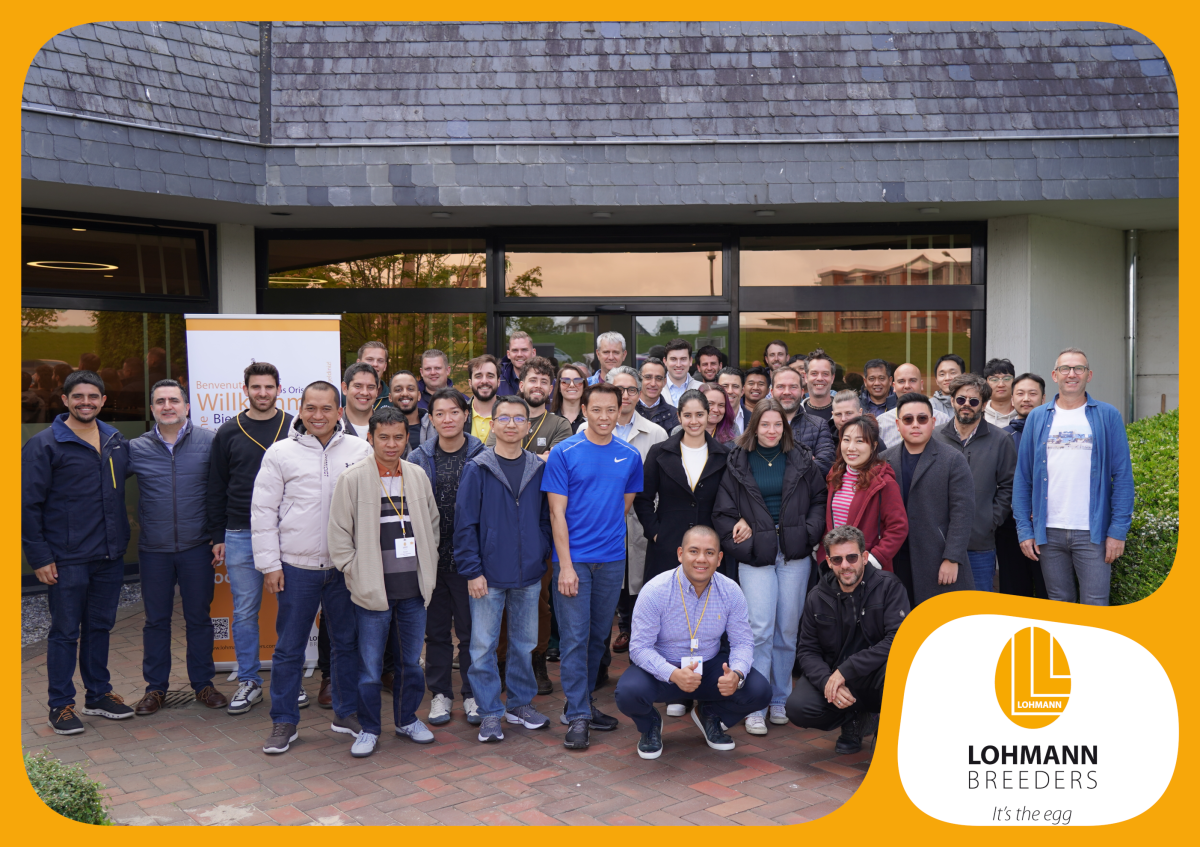

 Management
Management